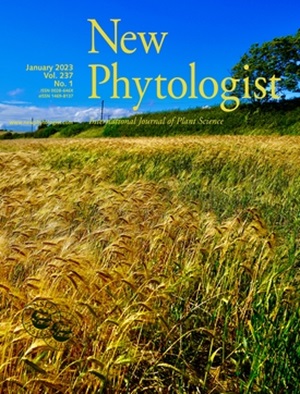On herbarium specimen images and artificial intelligence
IF 8.1
1区 生物学
Q1 PLANT SCIENCES
引用次数: 0
Abstract
SummaryDigitized herbarium specimens are increasingly used to train artificial intelligence (AI) models in plant identification and other botanical applications. The abundant specimen images available in public repositories are especially amenable to AI. For instance, digitized herbarium sheets are relatively standardized – generally flattened portions of plant specimens mounted on paper with written metadata, imaged at a similar scale with uniform color‐corrected illumination. Herbarium specimen identifications rely on standardized taxonomies that have also been reviewed by one or more professionals, providing high label accuracy – a critical advantage for AI model training. In this review, we tackle the basics of AI computer vision as it relates to digitized plant specimens: how AI is applied, what hypotheses can be tested, how datasets should be constructed, and how to produce a general workflow. Lastly, we provide recommendations for best practices along with recommendations for ways that future AI researchers may refine herbarium‐focused models. In an era of declining taxonomic and specimen‐based botanical expertise, we believe that this form of AI‐based plant research presents an opportunity to augment human capacity and provides opportunity for hypothesis‐based research that must be capitalized upon.植物标本室标本图像与人工智能
数字化植物标本馆标本越来越多地用于训练人工智能(AI)模型,用于植物鉴定和其他植物学应用。公共资源库中丰富的标本图像特别适合人工智能。例如,数字化的植物标本表是相对标准化的——通常是将植物标本的扁平部分与书面元数据一起放在纸上,在均匀的颜色校正照明下以相似的比例成像。植物标本室标本的识别依赖于标准化的分类,这些分类也经过了一个或多个专业人员的审查,提供了高标签准确性——这是人工智能模型训练的一个关键优势。在这篇综述中,我们处理人工智能计算机视觉的基础知识,因为它与数字化植物标本有关:如何应用人工智能,可以测试哪些假设,如何构建数据集,以及如何产生一般工作流程。最后,我们提供了最佳实践的建议,以及未来人工智能研究人员可能改进以植物标本馆为重点的模型的方法的建议。在一个分类学和基于标本的植物学专业知识下降的时代,我们相信这种形式的基于人工智能的植物研究提供了一个增强人类能力的机会,并为必须利用的基于假设的研究提供了机会。
本文章由计算机程序翻译,如有差异,请以英文原文为准。
求助全文
约1分钟内获得全文
求助全文
来源期刊

New Phytologist
生物-植物科学
自引率
5.30%
发文量
728
期刊介绍:
New Phytologist is an international electronic journal published 24 times a year. It is owned by the New Phytologist Foundation, a non-profit-making charitable organization dedicated to promoting plant science. The journal publishes excellent, novel, rigorous, and timely research and scholarship in plant science and its applications. The articles cover topics in five sections: Physiology & Development, Environment, Interaction, Evolution, and Transformative Plant Biotechnology. These sections encompass intracellular processes, global environmental change, and encourage cross-disciplinary approaches. The journal recognizes the use of techniques from molecular and cell biology, functional genomics, modeling, and system-based approaches in plant science. Abstracting and Indexing Information for New Phytologist includes Academic Search, AgBiotech News & Information, Agroforestry Abstracts, Biochemistry & Biophysics Citation Index, Botanical Pesticides, CAB Abstracts®, Environment Index, Global Health, and Plant Breeding Abstracts, and others.
 求助内容:
求助内容: 应助结果提醒方式:
应助结果提醒方式:


